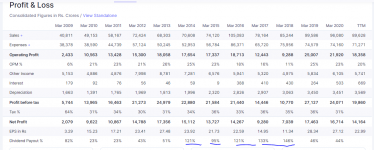Perhaps that's the intention. If you look at the clusters, the functions of Ammo & Explosives, materials & components & ordinance equipment group of factories can easily be taken up by the pvt sector without having to wait for privatisation of these clusters , if not immediately then within a span of a year at the most. Not that the other clusters can't be replicated but the threshold in terms of technology employed of the aforementioned 3 clusters is too low a barrier.If done by the same finesse that this government has shown in the other areas, there is a significant probability that it will run most of the OFB to the ground.
Besides which pvt sector in their right minds would take over a GoI enterprise with a bloated staff strength & pay them handsome wages.
By opting for a strike, that too at a time like this they've dug their own graves. If Modi responds like how KCR did to the state transport strike, there's not going to be an iota of sympathy whatsoever for these specimens.














